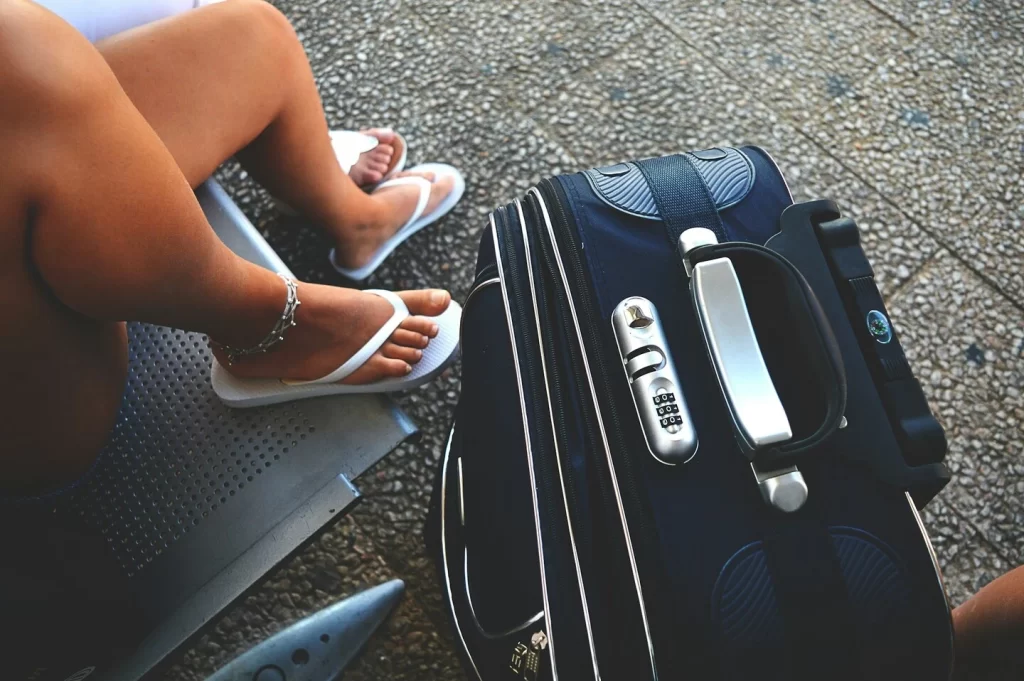
When embarking on a journey, the art of packing light can significantly enhance your travel experience.
When traveling, it is a good idea to minimize excess clothing, toiletries, and personal care items; pack smaller quantities or exclude them entirely. Of course, comply with airline regulations by avoiding prohibited items like sharp objects, flammable substances, and explosives.
In fact, packing strategically can make all the difference, from reducing stress to increasing mobility.
One way to start is to distinguish between the essentials (i.e. the ‘must-haves’ on any given trip) from items that can be left behind.
This article will help you to reimagine what’s truly necessary, so that you can streamline the packing process and avoid unnecessary burdens as a traveler.
Let’s explore 11 items to leave out of your travel bag to make your adventures more enjoyable.
Minimize Your Load: Selective Packing and Elimination Tips
Before delving into what to leave out, it’s essential to identify the absolute essentials for your trip. These typically include your passport, smartphone, and keys to your home.
In reality, many items you may consider ‘must-haves’ can actually be excluded, such as the following:
- Water bottles, if clean mineral water is easily accessible in the city you’re visiting.
- Extra Towels, if your accommodation provides them.
- Physical debit cards, if mobile payments or digital wallets are set up.
- Cash, in cities where digital payments are prevalent.
Further, it is entirely feasible to survive without packing most personal care items, toiletries, and comfort items for a trip abroad.
With some planning and preparation, you can easily buy the items you need once you arrive at your destination.
Hence, go ahead and make your “essentials” list as small as possible. This allows you to reimagine light packing.
This is especially beneficial if you tend to be an overpacker who struggles with reducing load.
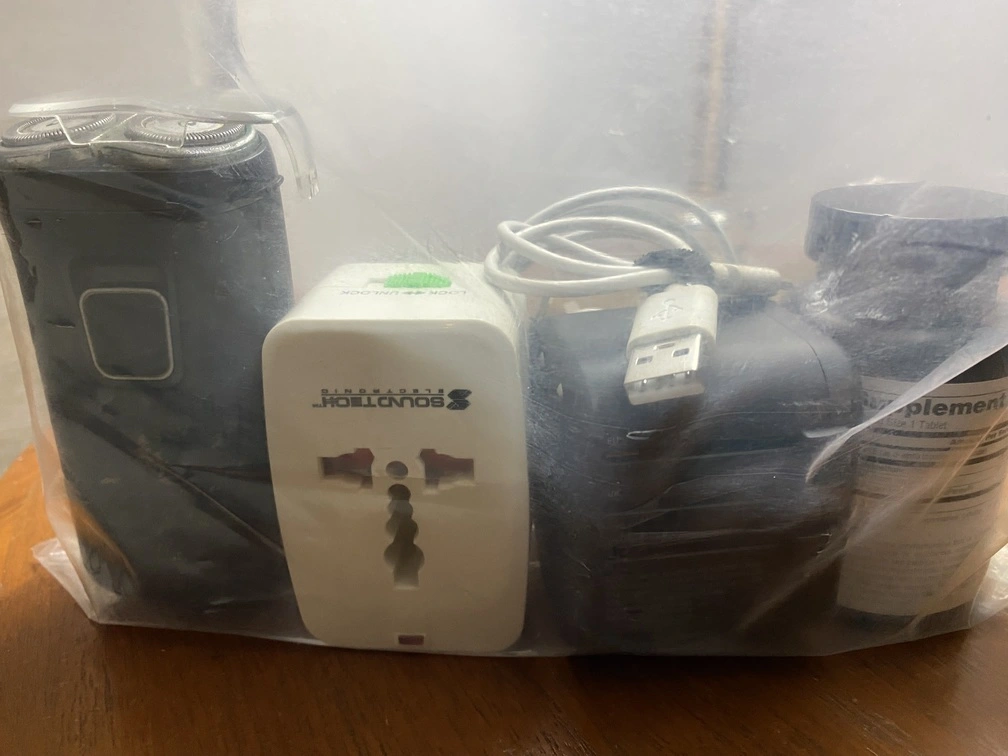
Next comes the ‘boring’ part of travel packing: eliminating items that are prohibited by airlines. Check your airline’s restrictions, which are typically standard across carriers. Prohibited items in carry-on luggage include sharp objects like knives and scissors, flammable substances like aerosol cans and lighters, and liquids exceeding 100ml, with exceptions for essential medical or infant supplies.
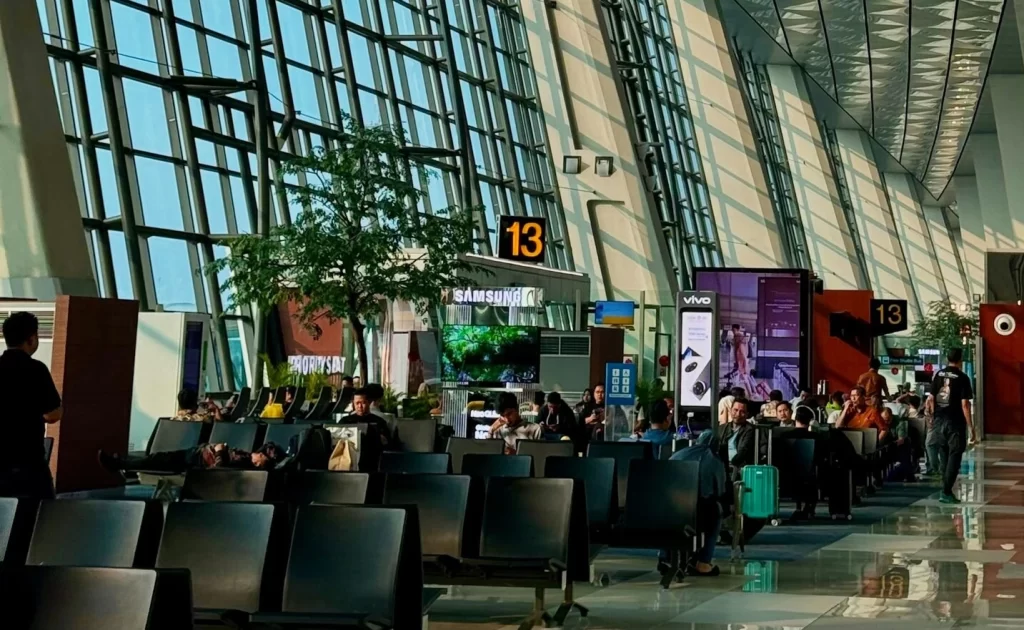
Here are some strategies I recommend for keeping your packing list small before a trip:
- Using multi-purpose items: Opt for items that serve multiple functions. Examples are a universal power adapter (replacing separate chargers) and tools capable of multiple functions like your smartphone (functioning at once as a camera, e-reader, and even a second display for your laptop)
- Making travel-sized sets of items: Create smaller versions of regular-sized toiletries, cosmetics, and other personal care items. For instance, use smaller containers <100ml (get a travel set), or simply buy smaller bottles of such toiletries. You might be surprised to find travel-sized alternatives for nearly anything in these categories.
- Switching to alternatives: Replace bulky jackets with lightweight layers and full-sized bottles of soaps with solid versions, for instance.
Additionally, systematically reassess your packing list after every trip – a post-trip review is an opportunity to streamline your packing list.
Most travelers unfortunately skip this step, even though they often end their trips with a variety of untouched items.
You should identify items you didn’t use or used sparingly during your past trip, and strongly consider leaving them out in the future.
Tip: To pack your day bag effectively for exploring your destination, you can visualize your daily activities and logistics with the help of a comprehensive day bag checklist. Likewise, focus on the essentials first, and gradually add items as needed.
What to Leave Out of Your Travel Packing List
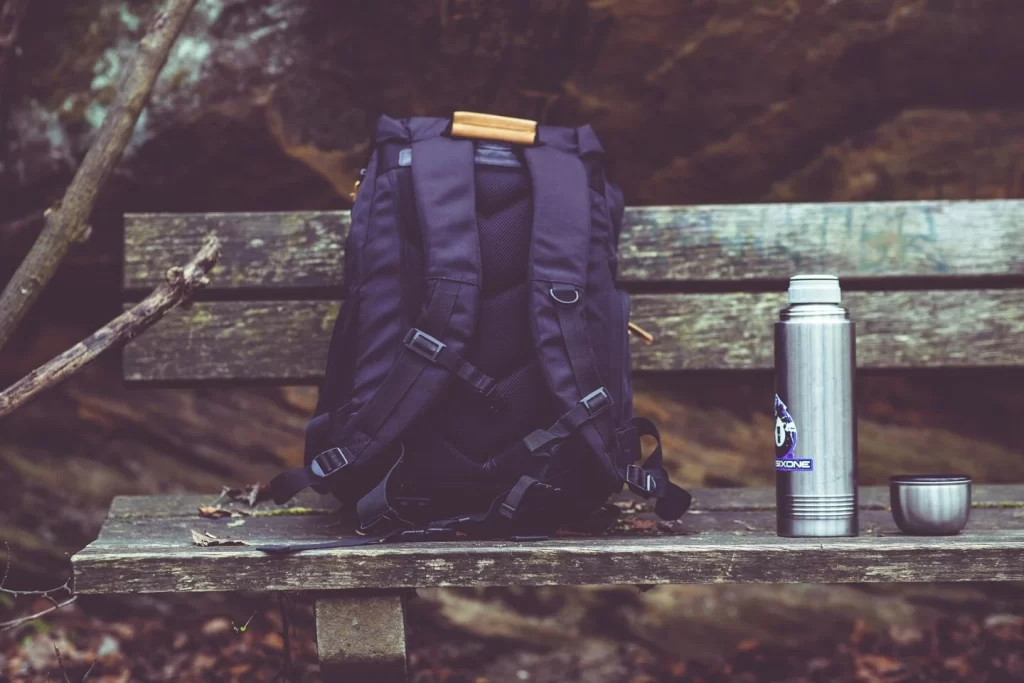
Now that we’ve established the importance of packing light and strategies for doing so, let’s delve into specific items to leave out of your travel bag.
By analyzing over 100 answers from fellow travelers on forums regarding items they would leave out of their packing list, it’s evident that certain categories of items frequently emerged. The top categories include:
- Clothing and Accessories (36.2%): Travelers often suggest leaving out “just-in-case” pieces, bulky clothes, and extra shoes.
- Personal Care Items and Toiletries (29.5%): Hair tools, excessive makeup, and toiletries like bath and shower items are common items to exclude. Many of these can be downsized or replaced with lighter, space-saving versions.
- Electronics and Gadgets (16.2%): Limiting electronics to only essential and/or multi-functional devices helps reduce weight and space.
| Category of items | Percentage of overall items travelers suggested leaving out |
| Clothing and Accessories | 36.2% |
| Personal Care | 17.1% |
| Electronics and Gadgets | 16.2% |
| Toiletries | 12.4% |
| Comfort Items | 8.6% |
| Day Bag | 7.6% |
| Miscellaneous | 1.90% |
Hopefully this guide helps you to re-examine your own packing list and provide ideas on how to refine it.
This article was originally published on unboundist.com. If it is now published on any other site, it was done without permission from the copyright owner.
1. Excess Clothing for Contingencies
36.2% of the items travelers suggest excluding pertain to clothing and accessories.
Of these, 19.1% are clothes and outfits, 14.3% are shoes, and the remaining 2.8% are miscellaneous items, including accessories such as jewelry and expensive sunglasses and tools such as iron.
Key Insights:
- Leave Out “Just-in-Case” Items: 14.3% of total suggestions focus on excluding extra clothes and shoes. Packing for every possible scenario adds unnecessary weight.
- Aim for Versatility: Choose versatile pieces that can be mixed and matched for casual and formal events, and consider re-wearing items.
- Practical Example: Instead of multiple pairs of pants, pack a few pairs of shorts and wear a versatile pair of pants on the plane that goes with everything.
Particularly, many travelers warned against bringing extra pairs of shoes. In fact, 9.5% of answers highlight excess shoes as a common mistake. Keeping one pair on your feet and another in your bag is generally acceptable, but bringing more than that is definitely frowned upon.
In terms of washing, consider doing laundry by hand or visiting the laundromat every few days. This might allow you to pack just 2-3 ‘must-have’ pairs of tops, bottoms, underwear, and socks. Consider going for quick-dry clothes that can dry overnight.
Last but not least, pack certain essentials (e.g. bras) or thin party layers (e.g. bikini) that do not add much weight.

2. Heavy or Bulky Clothing
Besides excess/spare clothing, 7.6% of total items travelers suggest leaving out are heavy or bulky clothing, such as heavier jackets and multiple pairs of jeans.
Generally avoid bulky sweaters, coats, or shoes that take up valuable space in your luggage.
Yet, consider these additional points:
- Weight isn’t the only priority – do not compromise your comfort levels for the sake of lighter packing. For example, shoes with thin soles may not last, depending on where you are walking. Thick-soled shoes last longer and make more overall sense financially and logistically for a traveler.
- Climate and Activities: Consider the climate and activities at your destination to determine the most suitable clothing options.
Therefore, you should balance the weight and bulkiness of your clothing with their practicality and comfort. Prefer lighter, less bulky items, but ensure they are suitable for your destination and activities.
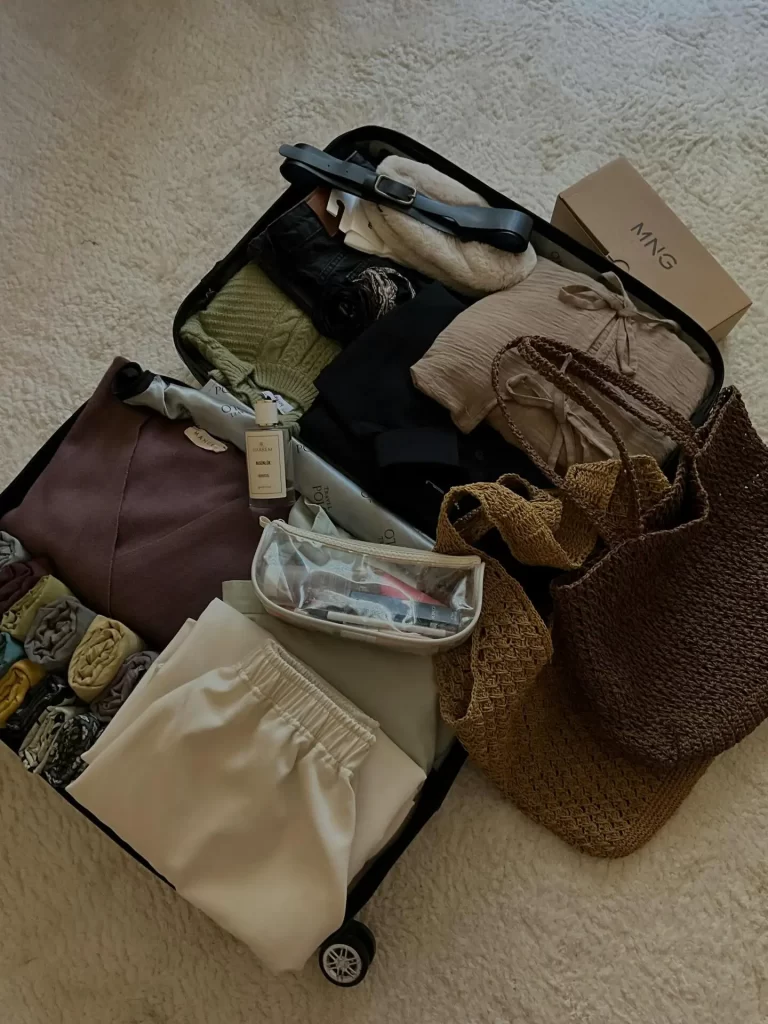
3. Excess Plugs, Chargers, or Adapters
In terms of electronics and gadgets, they constitute 16.2% of the items that travelers suggested to leave out.
- Almost half of these items are adapters, chargers, and plugs.
- Others are various single-use or specialized electronics that carry too much weight or space (which can be replaced by multi-purpose devices).
Here are some ideas on what to do regarding your electronics:
Minimize Electronic Accessories:
- Minimize the number of electronic accessories you pack by investing in multi-functional chargers or portable power banks.
- As a traveler, use a universal power adapter to replace multiple region-specific adapters. This simplifies the packing process and reduces the risk of forgetting the correct adapter for a particular country.
Streamline Your Electronics:
- Consider leaving out non-essential electronics that require a plug, such as laptops, cameras, and hairdryers. Depending on your requirements, only bringing essential devices may be a wise idea.
- You might find that you only need your phone for certain trips, such as shorter or less work-intensive ones.
- Limiting devices that need plugs can reduce the number of adapters or separate chargers required.
- A single USB plug adapter can charge your phone (and tablet) using different outlets in different countries (without needing separate chargers for each device), making it efficient and space-saving.
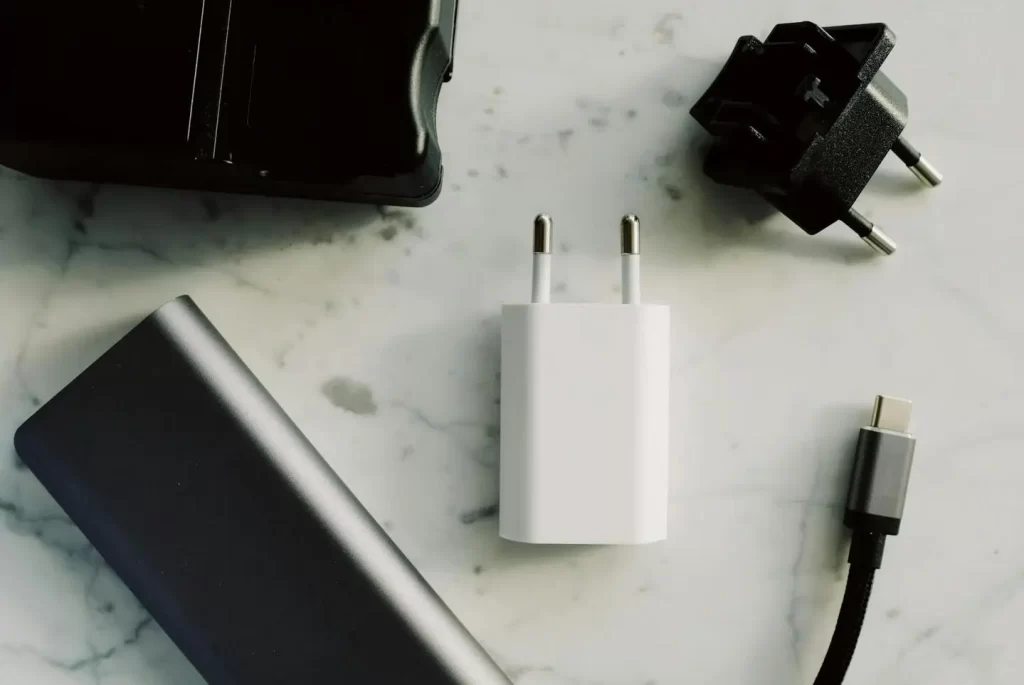
4. Single-Use or Specialized Electronics
Leave behind single-purpose gadgets or devices that can be replaced with multi-functional alternatives.
Modern smartphones can often fulfill functionalities that other electronics fulfill at a reasonably good standard.
If you can get the most out of your smartphone, it can potentially replace your camera, e-reader, tablet, and even your laptop to some extent.
Such single-use electronics constitute around 8% of items that travelers suggest leaving out.
5. Hair Tools
17.1% of the items that travelers suggested exclude are personal care items.
Of these, 10.5% are hair tools whilst 5.7% pertain to makeup products.
Hair tools include a variety of items such as hair dryers, straighteners, curling irons, and other styling tools. Many travelers suggest going without them, especially those full size plug-in ones.
Here are some ideas for carrying less:
- You may opt to embrace your natural hair or go for low-maintenance styles during your travels.
- Consider using travel-sized alternatives.
- Make do with what’s available at your accommodation.
- You can check/ask before booking an Airbnb or hotel and even be pickier when selecting accommodation.
6. MOST Makeup Products

Streamline your beauty routine by packing multi-purpose products or opting for a minimal makeup look. Some travelers suggest leaving out products such as makeup remover.
- One way to travel light is to use a travel makeup bag. Have the bag be fairly compact containing everything you need at travel sizes and quantities. Keep it easily accessible so that you can grab it and go abroad.
- Another option is to simply pick a few makeup products you would rather not go without.
- Consider selecting 1-2 essential makeup items that serve multiple purposes.
- For instance, a tinted moisturizer can serve as both foundation and provide hydration to your skin, while a versatile lipstick can double as blush.
- Lastly you may embrace the no-makeup look for travel. Some of you may actually enjoy the no makeup aspect of travel. It might feel liberating and allow your skin to breathe.
- You may choose to focus on skincare essentials like sunscreen, moisturizer, and a tinted lip balm to keep your skin protected and hydrated.
7. Toiletries or Personal Care Items in Original or Large Quantities
12.4% of the items that travelers suggested exclude pertain to toiletries. 5.7% pertain to soaps and 2.9% are bath/shower towels.
Decant your toiletries or personal care products by transferring them from their original packaging into travel-sized containers, so as to save space and comply with airline regulations. Thus, you travel with a more compact selection of toiletries as opposed to full-size bottles. Decanting is particularly useful for liquid products such as shampoo, conditioner, body wash, lotion, or other personal care items.
Consider purchasing such liquid items upon arrival at your destination to avoid carrying unnecessary weight.

Related: Why You Should Use a Clear Bathroom Bag for Travel
8. Soaps
Large bottles of liquid toiletries and bath/shower essentials can be bulky, unnecessary, and prohibited under standard airline regulations.
It is safe to mention that soaps, typically involving large bottles of liquid toiletries like shampoo, body soap, and hand soap, can usually be safely excluded from one’s travel bag.
You may opt for solid alternatives like shampoo bars or multi-purpose cleansing bars to save space and reduce waste.

9. Towels
Unless staying at extremely budget-friendly accommodations, most lodgings provide towels for guests. Skip the extra weight and leave towels out of your packing list. Worst case, you can always buy an inexpensive bath towel later – or check before booking your accommodation.
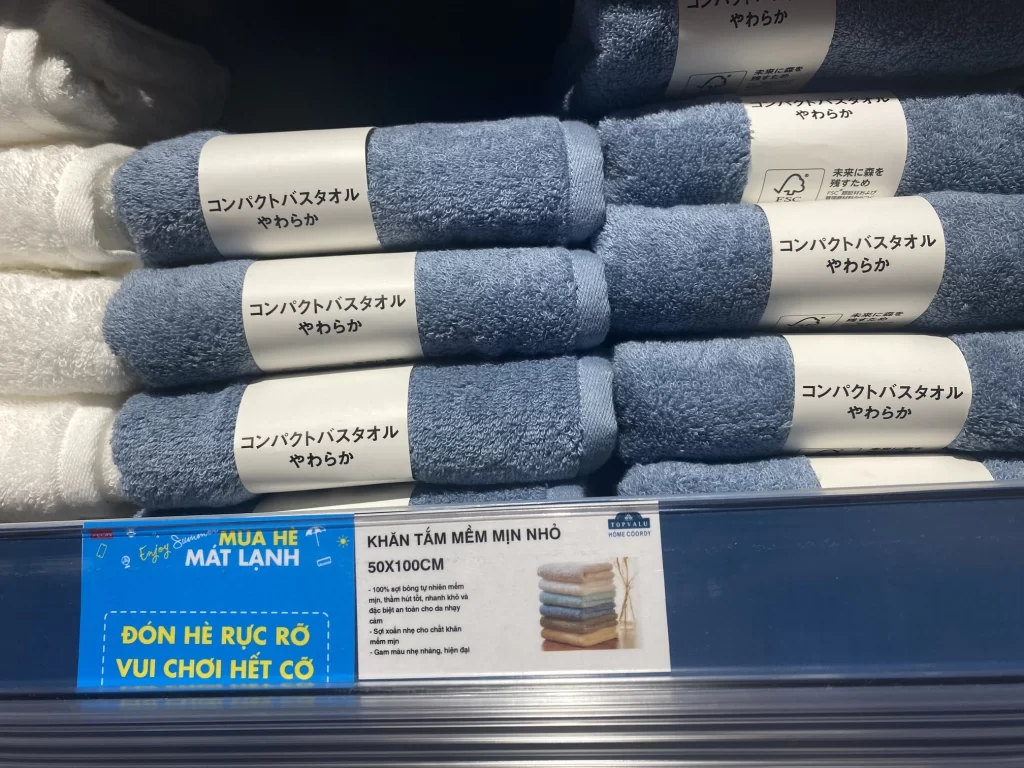
10. Umbrella
7.6% of items that travelers suggested to leave out relate to typical day bag items. 4.8% are umbrellas, an item many would consider a wet weather ‘essential’.
Carrying an umbrella can be inconvenient when there is no rain, and even if there is, there are alternatives that could do the job. Here are some options:
- Instead of packing a bulky umbrella, you may opt for a compact, lightweight one.
- Some travelers would rather buy an umbrella at their destination.
- Others suggest packing a poncho or raincoat as an alternative, which are lightweight items.
11. Physical Books and Other Comfort Items
Leave behind unnecessary comfort items and focus on essentials that enhance your travel experience.
While it’s tempting to bring along your favorite physical books, consider digital alternatives like e-books, audiobooks, or podcasts to save space and weight. Carrying a smartphone or even a kindle for travel would be more efficient than multiple physical books.
Conclusion
On the whole, by reassessing your packing list and prioritizing essentials, you can lighten your load and enhance your mobility while traveling.
Embrace versatile, multi-purpose items, and be mindful of airline regulations and destination-specific requirements when packing.
With strategic planning and thoughtful consideration, you can streamline your packing list, and thus your overall travel experience.